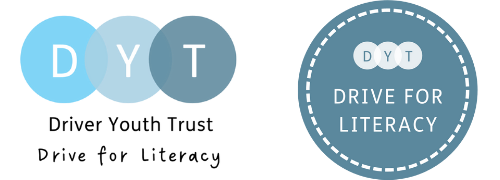Dyslexia: the view from Scotland
25/9/2018
Last week, DYT’s Director of Operations, Karen Wespieser, ventured north of the border to present at ResearchED Scotland. In this blog, she reflects on what she learnt about the Scottish system.
Following the joint session that DYT’s Director of Education, Jules Daulby, and I presented on Dyslexia at the ResearchED National Conference, this weekend I was in Scotland to present on the same topic but this time alone! Whilst I have learnt a lot about dyslexia since I joined DYT earlier this summer, this has primarily been within the confines of the English system where DYT is most active. I therefore had to do my homework before flying north and learn as much as I could about dyslexia in the devolved system.
Of course dyslexia isn’t just an English issue. A quick flick through the history of the topic reveals that the initial identification and terminology came from Germany. What can and does differ however are the policies countries put in place to support young people with dyslexia in schools.
 |
 |
Adolph Kussmaul, German physician who first identified ‘word blindness’ |
Rudolph Berlin, German ophthalmologist who coined the term ‘dyslexia’ |
In England, the approach taken to dyslexia in schools was set most recently by the 2009 Rose Report which provided the current definition of dyslexia accepted by most people (including DYT) and made recommendations in five areas:
- Strengthen teaching and learning
- Assess children’s progress and identify children’s difficulties
- Further strengthen intervention programmes
- Guidance for parents and others
- Assure the quality of provision.
Since 2009 however, there has been little more said on the matter. Next year will mark 10 years since the report, and to mark it DYT is conducting new research into specialist teachers, the then government’s flagship response to strengthening teaching and learning in England.
In Scotland however, the approach to dyslexia in schools was reviewed much more recently. Like the Rose Report, Scotland’s 2014 report Making Sense: Education for Children and Young People with Dyslexia in Scotland included a definition and five recommendations:
- Access to up-to-date practical advice and guidance on dyslexia;
- Access to wide range of high-quality career-long professional opportunities at school, local and national level;
- Initial Teacher Education (ITE) and postgraduate awards should give high priority to developing knowledge and skills in relation to dyslexia;
- Action to improve the quality of educational outcomes for children and young people with dyslexia;
- Availability and use of reliable information on children and young people’s needs, development and achievement should be improved.
However, what particularly impressed me was that alongside the report there was a set of self-evaluation questions for schools, and better still the report was re-visited just three-years later to see what progress is being made. This approach to both policy making and classroom practice puts self-reflection at the heart of the actions being taken for young people with dyslexia and one that – despite all the caveats about education tourism – I would like to see adopted south of the border too.
Key evaluative questions for schools and practitioners include (from Making Sense 2014)
How do we know there is respectful and positive communication and engagement between children and young people, parents/carers, staff and partners for dyslexia and inclusion? |
